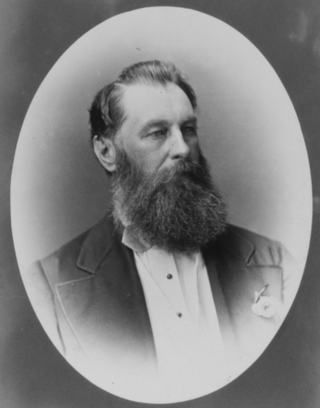Top Qs
Timeline
Chat
Perspective
William George Storm
Canadian architect (1826–1892) From Wikipedia, the free encyclopedia
Remove ads
William George Storm (October 29, 1826 – 1892) was a Canadian architect who designed a number of prominent monuments in Toronto, Ontario.
Early life
William George Storm was born on October 29, 1826 in Burton-upon-Stather, England, son of Thomas Storm and Mary Hopkins. He and his family immigrated to Upper Canada and settled in York around 1830. He briefly studied at Upper Canada Academy in Cobourg (now Victoria University, Toronto.[1]
Career
Summarize
Perspective
Storm's father was a prominent contractor who introduced him to the building trade. In 1845, while working with his father, Storm suffered a near-fatal fall from a scaffolding. He apprenticed first under William Thomas and then under Frederick William Cumberland. In July 1852, Storm and Cumberland formed a partnership, and the firm became one of the most prominent in nineteenth century Toronto.[1] The firm won many of the city's most important commissions, including expanding Osgoode Hall, the chapel of St. James-the-Less, the tower of St. James Cathedral, and University College.
Storm and Cumberland's partnership dissolved in acrimony in 1871. Storm also encountered serious health problems that left him without work and confined to hospital. A friendship with Emerson Coatsworth gained Storm commission to design new elementary schools across the city. One of these buildings, today Inglenook Community High School, survives today. He then won a commission to build St. Andrew's Church. Perhaps his most noted building is the Richardsonian Romanesque main building for Victoria College.
Storm was a lieutenant in the 5th Battalion of Toronto militia and a member of the 10th Battalion Volunteer Militia Rifles (later the Royal Grenadiers) when it was established in 1862. He was also a life member of the Toronto Mechanics’ Institute.[1]
Storm was a leading Mason and was Master of St. Andrew's Lodge No. 16 in 1858 and 1859. He was also a founder of the local Commandery of Knights Templar. Masonic symbolism is incorporated into a number of his structures. He was also a founding member of the Ontario Association of Architects, and served as its first president from 1889 to 1892. He was a founding member of the Royal Canadian Academy of Arts.[2]
He died in 1892, aged of a stroke
Remove ads
Works
References
Wikiwand - on
Seamless Wikipedia browsing. On steroids.
Remove ads










